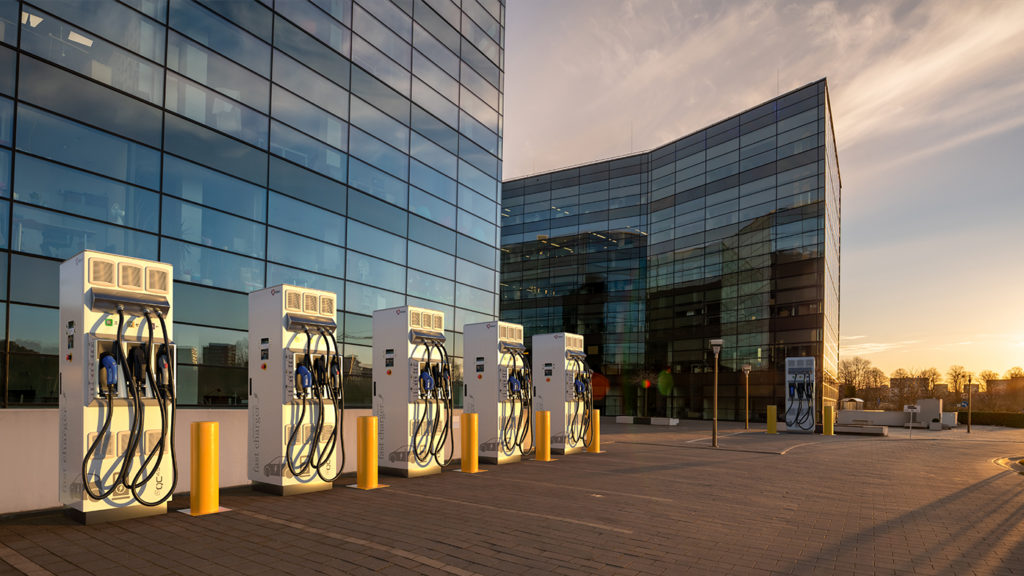Co-authored-by Jacob Pavlik, Research Manager | Seattle/Bellevue, and John Scott, Managing Director | Florida, REMS.
Electric Vehicles (EVs) on American roads are becoming more and more common. As more drivers ditch the gas stations and switch to electric, there will be pressure on the places they park to provide a charging station. Landlords are responsible for deciding the number of chargers and how to structure the added installation, maintenance, and electricity expenses.
It has only been in the last decade that office buildings saw electric vehicle (EV) charging stations installed. Now, it is increasingly expected by office tenants that the buildings they lease have charging stations available for their employees who have EVs. Although California has the most EVs per driver at 3.3% (Figure 1), EVs still do not represent a significant portion of cars on the road.

The initial investment of installing charging stations almost always falls on the landlord as a capital expense unless requested by a specific tenant as part of a lease negotiation. Currently, there are many different ways landlords can add chargers to their buildings and manage the operations as they see fit.
Based on an internal Colliers survey (including Real Estate Management Services, Office Agency Services, and Research ), there is almost an even split among landlords on how they handle the increased cost of electricity resulting from electric vehicle charging stations. Thirty-six percent of landlords have drivers pay when they charge, 29% have tenants pay through Common Area Maintenance charges, and 28% pay for it themselves as an amenity (Figure 2). “Other” was selected by 7% of buildings responding to the survey if they had a different and more unique arrangement.

When buildings have EV charging stations, the average number of chargers per 100 parking stalls is 1.5. In other words, 1.5% of parking stalls can charge an electric vehicle (assuming at least one EV charger is in the building). As the share of EVs on the road increases, the number of charging stations in office buildings will need to grow to accommodate demand. More and more electric vehicles are being sold, both in raw numbers and as a percent of all vehicle sales (Figure 3, Edmunds).

By 2035, the State of California, home to 39 million people, or more than 1 in 10 Americans, will require all cars on the road to be zero emission, including electric, hybrid, and plug-in hybrid vehicles. California typically leads the country on environmental sustainability issues, and other states will likely follow suit. As a result, landlords will increasingly be expected to provide the amenity of EV Charging to their tenants as more users switch to EVs.

 Patrick Duffy
Patrick Duffy

 Anjee Solanki
Anjee Solanki Monty Turner
Monty Turner
 Craig Hurvitz
Craig Hurvitz Justin Smutko
Justin Smutko
 Sheena Gohil
Sheena Gohil Bob Shanahan
Bob Shanahan Dougal Jeppe
Dougal Jeppe Kai Shane
Kai Shane